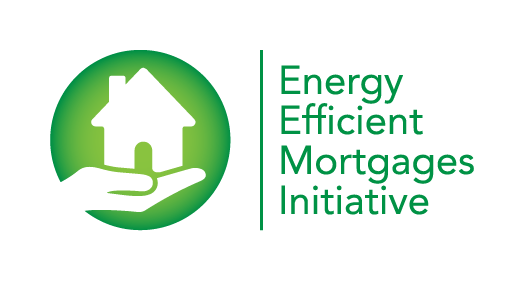
By James Drinkwater, Regional Director, Europe Network – World Green Building Council
If you look deep into the dynamics of the property sector, there are two groups of actors that have a greater influence than any others: building occupants and institutional investors. The behaviour of these two groups will, to a large degree, determine whether or not we meet our sustainability goals in the building sector, which accounts for over a third of Europe’s emissions.
In Europe, there is no more central instrument to both consumers and institutional investors than the mortgage. Mortgages account for around a third of the total assets of the European banking sector – equivalent to half of the EU’s GDP (EUR 7 trillion at the end 2016). The potential of this capital to drive deep energy efficiency improvements to Europe’s building stock and lower its emissions is enormous, but it remains almost entirely untapped.
Apart from a few niche ‘green mortgage’ products offered by a tiny number of banks to reward consumers for purchasing or renovating greener homes, building performance and mortgage loan conditions are not being linked. However, in late October 2017 the Energy efficiency Mortgages Action Plan (EeMAP) initiative published a ground-breaking new ‘White Paper’ aimed at changing all that.
Through its partners, the EeMAP project brings together the separate worlds of institutional investors, consumer experts, property valuers and green building experts, to establish a European ‘energy efficiency mortgage’ product. The White Paper, published on 26 October, sets out a series of key recommendations for the development of energy efficiency mortgages across Europe, to create a market that helps fill a significant part of Europe’s energy efficiency financing gap. Crucially, given the cross-border nature of banking and capital markets, EeMAP is looking to establish a pan-European approach to green mortgages.
At the centre of the EeMAP project is the belief that a building’s energy efficiency has a risk mitigation effect for banks as a result of its impact on running costs and a borrower’s ability to service their loan, and on the value of the property. If this can be proven, energy efficient mortgages could offer homebuyers across the EU better interest rates or additional capital in return for purchasing more energy efficient homes or committing to energy saving renovation work. This is precisely what a 2018 EeMAP pilot phase aims to prove.
“EeMAP has the potential to change consumer behaviour and encourage energy efficiency investment in buildings via mortgage finance. In this way, the mortgage market could be a driver of the improvement of the quality of the EU’s building stock, opening new market opportunities, stimulating best practices and making banks’ portfolios more resilient; that is why we support the development of the EeMAP initiative.”
Luciano Chiarelli, Head of Group Secured Funding at UniCredit,
Based on feedback from market-leading banks across Europe, the EeMAP White Paper sets out the following key recommendations:
1. A simple and standardised framework for an energy efficient mortgage would help to pave the way for the market entry. Similarly, a clear definition of an energy efficient mortgage would help banks to make a differentiation between energy efficient and conventional mortgages in their risk management processes. In this way they can build datasets, to further demonstrate the risk reduction impacts of energy efficiency.
2. Banks need clear guidance on how and what to instruct property valuers in relation to the energy performance of buildings. This would help to ensure that energy efficiency is appropriately taken account of in property valuations.
3. Simple and proportionate energy efficiency measurement indicators would help banks to integrate energy efficiency into credit risk assessments.
The White Paper builds on four EeMAP reports, which represent the most up-to-date body of knowledge on the research and principles that should inform the growth of Europe’s green mortgage market. These examine current market practices within the areas of green finance, building performance indicators, property valuation and the impact of energy efficiency on risk, and are a must read for those who are interested in how we unlock private sector finance for energy efficiency. This research is now informing the design of key principles to underpin EeMAP’s pilot phase, due to launch in June 2018.
The White Paper has already been presented at a number of key climate events, including Buildings Day at the recent COP23 climate change negotiations, where focus on green finance is intensifying. Significantly, there is growing enthusiasm from major investors and energy utilities to support the EeMAP initiative.
On the launch of the White Paper, Agnès Gourc, Director of Sustainable Capital Markets at BNP Paribas said:
“Financing of energy efficiency projects opens tremendous social and economic opportunities for households, lenders and investors. In order to satisfy investor appetite for green bonds, we need to develop the right mechanism to deliver energy efficient assets. We need to focus on a simpe, robust and cost-efficient framework embedding energy efficiency into the mortgage origination and funding processes.”
Marco Marijewycz, representing EeMAP partner E.ON, Europe’s largest green utility, said:
“Improving our customers’ lives by helping them to reduce their energy costs through smarter and more efficient energy solutions is at the heart of E.ON’s business. Affordable finance is key to unlocking the potential of these solutions at scale and we believe energy efficient mortgages could offer customers a simple, understandable solution.”
Importantly, the White Paper also issues a call to action to key players whose input and support is vital to drive forward energy efficient mortgages both at EU and at national level across the region. Ahead of a market consultation in February and March of next year, it calls on all interested organisations to participate in forming the proposals for energy efficient mortgages which will underpin the EeMAP pilot phase. Contact EeMAP@hypo.org if your organisation wishes to join forces with EeMAP and spark a market in green mortgages.
Sitemap
Copyright © Energy Efficient Mortgages Initiative


The project DeliverEEM has received funding from the European Union’s LIFE 2023 programme under grant agreement No.101167431. The EeMAP, EeDaPP, EeMMIP projects have received funding from the European Union’s Horizon 2020 research and innovation programme under grant agreements No. 746205, No. 784979 and No. 894117 respectively
Privacy Overview
| Cookie | Duration | Description |
|---|---|---|
| cookielawinfo-checkbox-analytics | 11 months | This cookie is set by GDPR Cookie Consent plugin. The cookie is used to store the user consent for the cookies in the category "Analytics". |
| cookielawinfo-checkbox-functional | 11 months | The cookie is set by GDPR cookie consent to record the user consent for the cookies in the category "Functional". |
| cookielawinfo-checkbox-necessary | 11 months | This cookie is set by GDPR Cookie Consent plugin. The cookies is used to store the user consent for the cookies in the category "Necessary". |
| cookielawinfo-checkbox-others | 11 months | This cookie is set by GDPR Cookie Consent plugin. The cookie is used to store the user consent for the cookies in the category "Other. |
| cookielawinfo-checkbox-performance | 11 months | This cookie is set by GDPR Cookie Consent plugin. The cookie is used to store the user consent for the cookies in the category "Performance". |
| viewed_cookie_policy | 11 months | The cookie is set by the GDPR Cookie Consent plugin and is used to store whether or not user has consented to the use of cookies. It does not store any personal data. |

